Content
- 1. What is Electrical Transformer?
- 2. History related to transformers
- 3. Basic Structure of Electrical transformers
- 4. Construction of Electrical Transformers
- 5. Polarity of Electrical Transformers
- 6. Turns Ratio of Electrical Transformers
- 7. What does the transformer do?
- 8. Application of a Transformer
- 9. Advantages and disadvantages of using transformers
What is Electrical Transformer?
As the name suggests, an Electrical transformer transfers energy. A formal transformer definition will be –
“It is a device that transfers electrical energy between electrical circuits.”
It is a passive device. It uses Faraday’s law to transfer energy without any metallic contact. Electrical transformers are one of the useful and needed device for the power distribution.
History related to transformers
Miksa Deri, Otto Blathy and Karoly Zipernowsky are considered to be first designer of the first transformer. They also implemented transformer for commercial systems. Though the Law of induction was given by Faraday in 1830’s and Rev. The induction coil was invented by Nicholas Callan in the year 1836. In the meantime Thomas Alva Edison came up with the idea of Electric Bulb in the year 1882.
Basic Structure of Electrical transformers
A single phase electrical transformer consists of three main components. They are – Primary Windings, Secondary Windings & the Magnetic Core.
- Primary Windings – It is the part that is connected with the source. It is made up of coils of wire. Magnetic flux initially produces here.
- Secondary Windings – It is the part that is connected with the load. It is also made up of coils. There is a turn’s ratio that defines the number of turns of the wire to make both the windings’ coils. There is no metallic connection between primary windings and secondary windings, as mentioned before.
- Magnetic Core – It is the iron structure that wraps up both the primary and secondary windings. It is a soft iron core, made up of small elements to reduce the core’s losses.
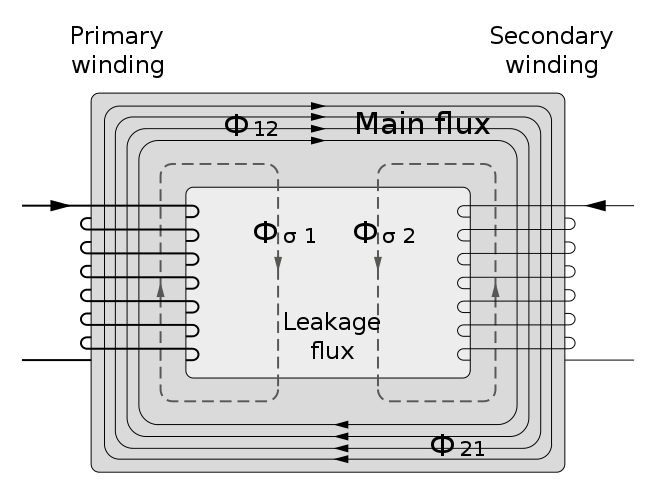
Construction of Electrical Transformers
The construction of Electrical transformers depends on how the primary and secondary windings are wrapped around the iron core structure.
There are two categories of transformers. One is Closed-core type and another is Shell-core type.
A. Closed Core Transformer –
- Here, both the windings are wrapped from outside of the core. (Both windings means – Primary Windings and Secondary Windings). In this construction, windings wrap-up every legs of the core. Half of the primary windings and half of the secondary windings are kept on over other densely on each leg. Magnetic flux passes by this process and increases magnetic coupling. This type of transformer has a drawback, known as – ‘leakage flux.’
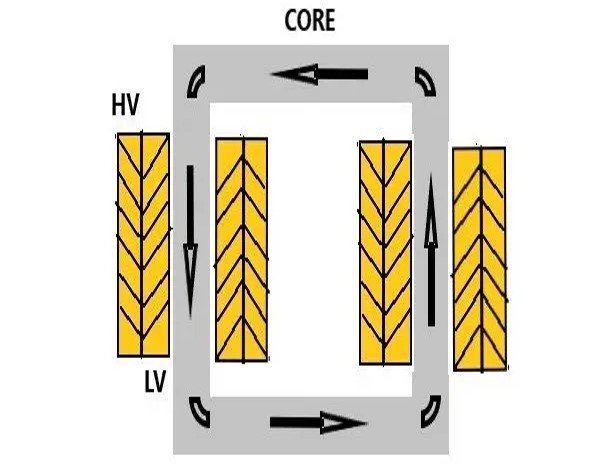
B. Shell Core Transformer –
- In this type, both the primary and secondary windings are inside the iron core. Here, the iron core forms a shell-like Structure for the windings, that’s why it is known as Shell Core Transformer. The windings share the same center leg, which has a cross-sectional area twice as the outer legs. This type of transformers overcome the issue of ‘leakage flux.’

- Windings: Windings are the current-carrying part of the transformer. Mainly copper or aluminium wire is used to make the coil of the windings. Transformer coils and windings can be classified into two main categories. They are – Concentric Coils and Sandwich Coils. Sandwich Coils are generally used in Shell Type Transformer. Alternate discs are made to spiral form.
- There are also Helical Windings, which are used in low voltage, high power applications. There are some insulators inside every type of windings. Insulators are one of the important elements for electrical transformers.
- Cooling: Cooling of a device helps the machine to operate more years flawlessly. Some electrical transformers need forced cooling, and some are self-cooling types. Forced cooling includes cooling by oil, water, or both. Large transformers with high power ratings are filled with transformer oils, which cool and insulate windings. Some transformers are filled with gases for cooling.
- Insulation: Insulation is necessary between turns of windings, between two windings, between core and windings. Layers of papers and polymer films are used as insulators. Large insulators use transformer oil as insulation purposes.
- Bushing: Bushing is a hollow electrical insulator that allows a conductor to pass through a barrier. Large, high rated transformers has bashings made up of porcelain or polymers.
The polarity check of Electrical Transformers
An Electrical transformer’s polarity is defined as the direction of induced emf in both the primary and secondary windings. It is of two types –
- A. Additive Polarity
- B. Subtractive Polarity
A. Additive Polarity
-In this type of polarity, the same polarity terminals are connected in both the windings.
B. Subtractive Polarity
– In this type of polarity, different polarity terminals are connected in both the windings.
What does the transformer do?
Electric transformers increases or decreases the supplied voltage and current. It does not change the frequency or the power of the supplied electrical signal. The need for using a transformer is that electrical appliances need a certain amount of voltage, which is lower or higher than the supplied power. For example, a LED which works on 1.5 volts – 2 volts will blow out if we connect it to a normal household rated power supply. So we need to use a step down transformer to use the LED.
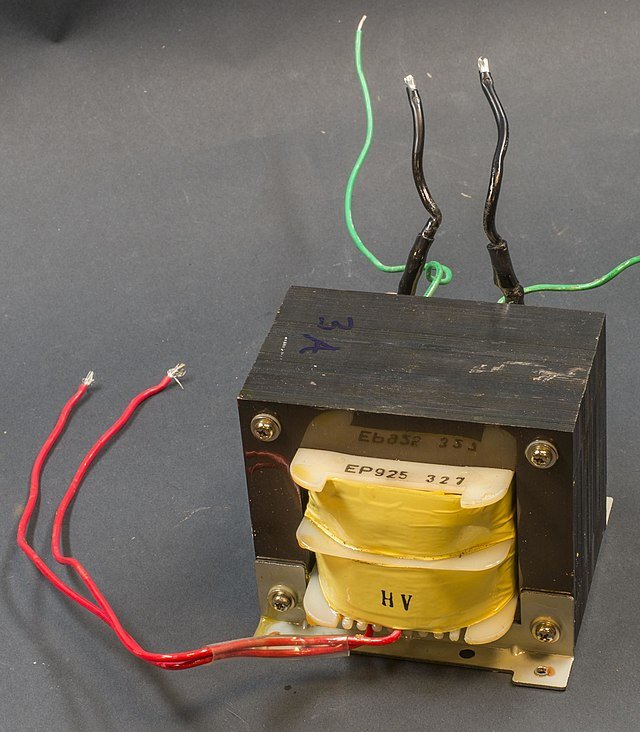
Click here to know about Working Principles, Efficiency and Losses of a transformer.
Application of a Transformer
Transformers has a lot of applications in today’s world. Some of them are –
i) Power Distribution:
- A large amount of voltage is produced in the power stations. But we cannot use that voltage directly for our household applications. In this time, a transformer comes into action. Transformers stepped down the voltage to our required voltage. This type of transformer is known as power transformers. There are also transformers which steps up the voltage. Because of this type of transformer it is possible to provide electricity to houses.
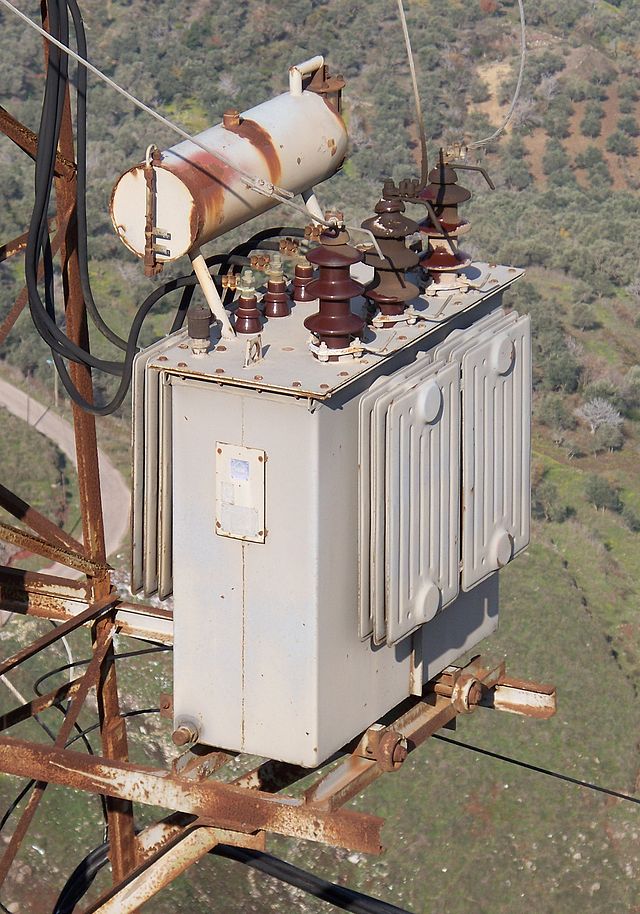
ii) Electronic Devices:
- Many electronics devices and home appliances use transformer either for stepping up voltages or stepping down voltages as per requirements.
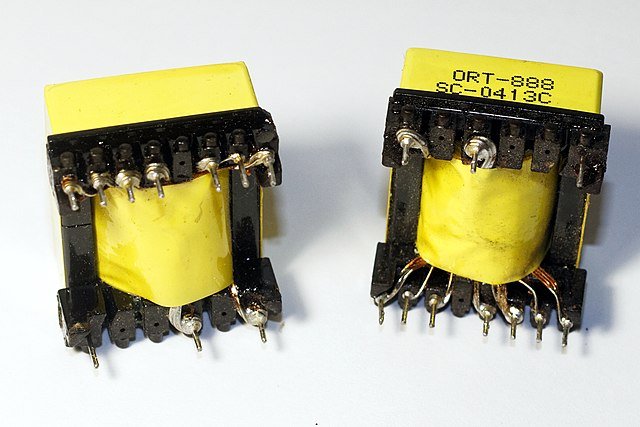
iii)Audio transformers:
- This type of transformers allows telephonic circuits to allow a two-way conversation over a single pair of wire. They also interconnections between audio systems. It can be used to match impedance like low impedance loudspeaker can be matched with high impedance amplifiers.
- Three phase transformers have wide use in industrial purposes where single phase transformers can not serve the purposes.
- Instrument transformers can isolate two device or system using its properties.
- Radio frequency transformers or RF transformers are used in Radar like devices and has application in radio frequency domain.
- Pulse transformers are used for transferring electric pulses in electronic circuits, digital circuits and in power distribution and controlling system.
Advantages & disadvantages of using a Transformer
Advantages of Electrical transformers
Transformers are used for various purposes because of its advantages. Some of the advantages are –
- Transmits Power: Transformers allow transmitting of electrical signal over long distance. The resistance of the transmission line get reduced after increasing the voltage and that is possible only by transformers. Thus, the power loss is less and electricity can be supplied to every household. Otherwise the resistance would be so high that it is quite impossible to supply.
- Continuous workings: Transformers can work continuously over long times. It does not need to switch off in a day or give rest.
- Low Maintenance: Transformers not only works continuously but also they need not high maintenance. Checking oil, cleaning the parts are the only maintenance a transformer needs. Also, the maintenance does not cost much and also not time consuming.
- No delay: Transformers has no delay while starting. It starts operation immediately. Once a transformer is implemented, it starts immediately.
- Efficient: Though transformers suffer losses but they are efficient enough for distribution economically. Almost 95% efficiency is achievable.
Disadvantages of using Electrical Transformers
Few disadvantages are –
- Larger in size : Though there are transistors that are small in size but as the voltage rating increases the transformer size get increased too. Not only the basic structure increases, the cooling system size get increased too. So it takes a lot of space to accommodate.
- Requires a cooling system: Transformers operates continuously and it produces a lot of heat. So to operate in a efficient way, a transformer need a cooling system attached with it.
- AC working only: Transformer works only for alternating current or AC voltages as it need time varying current to produce magnetic flux. Connecting with a DC voltage will burn out the transformer.
To know more about electronics click here

Hi, I am Sudipta Roy. I have done B. Tech in Electronics. I am an electronics enthusiast and am currently devoted to the field of Electronics and Communications. I have a keen interest in exploring modern technologies such as AI & Machine Learning. My writings are devoted to providing accurate and updated data to all learners. Helping someone in gaining knowledge gives me immense pleasure.
Let’s connect through LinkedIn –